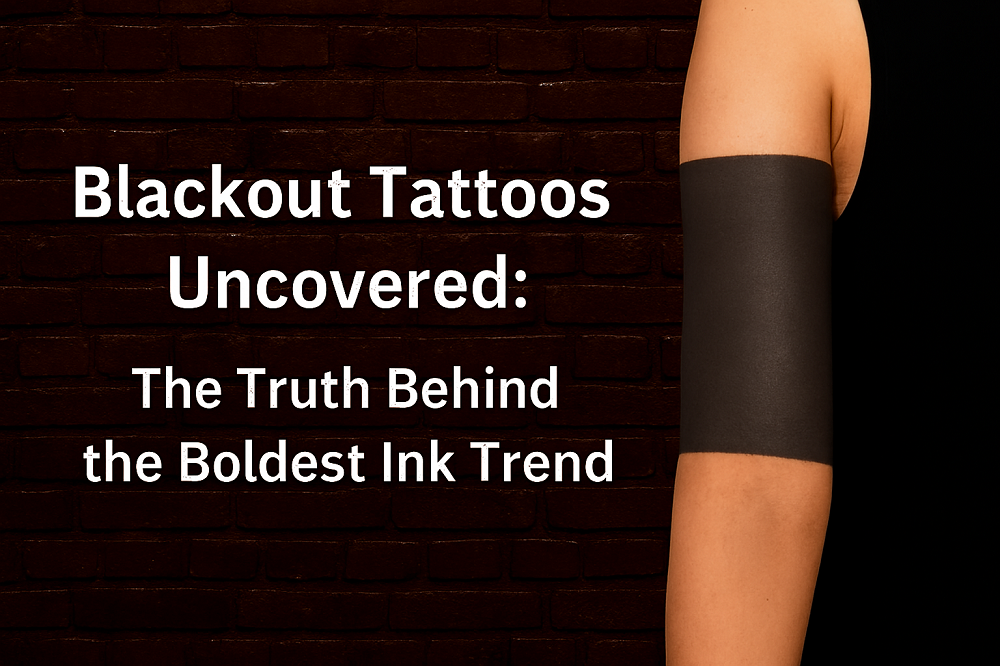Blackout Tattoos Uncovered: The Truth Behind the Boldest Ink Trend

Blackout tattoos aren’t for the faint-hearted. Covering large areas of skin in deep, saturated black ink, they transform the body into a canvas of contrast and rebellion. But what’s really behind this dramatic tattoo style? Is it simply about aesthetic shock value—or is there a deeper story that explains why more people are turning their entire limbs into solid silhouettes of ink?
More than Just a Statement
At first glance, blackout tattoos might seem extreme, even intimidating. Yet, they often come from personal reinvention. Many people use them to cover up older tattoos, scars, or faded artwork, giving a fresh start while embracing a striking new look. The result is both minimalist and powerful—a visual reset that commands attention without screaming for it.
But this isn’t just about design. It’s about intention. Some wear blackout tattoos as a form of self-expression rooted in strength and transformation. The uninterrupted dark tones can even carry symbolic meanings: ending one chapter and beginning another.
The Technique: Precision and Endurance
Creating a blackout tattoo is not quick work. Artists must layer large, even fields of black pigment with consistency and care. The challenge lies in saturating the ink perfectly so that no patches look uneven or washed out.
Because of the depth of shading and number of sessions involved, the process can be intense. Healing also takes time—usually several weeks—and aftercare becomes critical to maintaining an even tone. Moisturizing regularly, avoiding direct sunlight, and following an artist’s instructions help the tattoo retain its sharp depth.
The Visual Impact and Layering Trend
Some artists use blackout ink as a creative foundation for contrast tattoos. Once the black base heals, they etch lighter designs on top using techniques like white ink overlays or scarification art. This adds texture and dimension to what would otherwise be a single, flat field. When done skillfully, the result can look almost futuristic—skin and story intertwined in bold duality.
The dark surface amplifies lighter pigments dramatically, creating designs that almost seem illuminated from within. It pushes the art form beyond traditional outlines and color gradients, making blackout tattoos one of the most avant-garde styles of modern tattoo culture.
Pain and Preparation—What to Expect
Everyone asks: does it hurt more than regular tattoos? The answer depends on coverage area and pain tolerance. Since blackout tattoos usually require multiple passes over large sections, they can be more taxing physically and mentally. It’s crucial to pace sessions even if you’re eager to complete the project quickly.
Choosing an artist who communicates well, maintains cleanliness, and prioritizes client health is non-negotiable. For example, studios like Chalong Ink—known for professional expertise and hygiene standards—represent the type of care serious tattoo enthusiasts seek, particularly when exploring bold work like blackout art.
Many travelers look for studios that specialize in detailed work when searching for tattoo Phuket in Thailand studios known for advanced techniques and safe execution.
Why the Appeal Keeps Growing?
Ultimately, blackout tattoos challenge the idea of what tattooing means. They blur the line between design and identity, art and armor. For some, it’s a creative experiment; for others, it’s reinvention in its purest form—a new narrative inked over the past.
Blackout tattoos reject subtlety but embrace individuality. They’re not meant to be understood by everyone—just the person wearing them. And that’s the real deal: confidence expressed not through color or complexity, but through unapologetic simplicity.
- AI
- Vitamins
- Health
- Admin/office jobs
- News
- Art
- Causes
- Crafts
- Dance
- Drinks
- Film
- Fitness
- Food
- Games
- Gardening
- Health
- Home
- Literature
- Music
- Networking
- Other
- Party
- Religion
- Shopping
- Sports
- Theater
- Wellness


